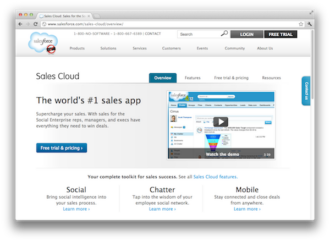Customer relationship management (CRM) software has been a boon for revenue growth and efficiency in every industry, but it’s only effective when you have clean and well-maintained databases. Managing duplicate records is critical to ensuring data accuracy and integrity, even in advanced platforms like Salesforce. Leaving duplicate records can throw off the accuracy of analytics and even impact compliance with data protection and privacy regulations.
So how do you enforce duplicate management in Salesforce? And how can you do it efficiently to avoid lowering your sales productivity? This article has everything you need to know.
The problem with duplicate data
Duplicate records occur any time there are multiple instances of the same data entity, such as a customer profile, sales lead, product, or any other entity tracked in Salesforce. Duplicates can be the result of data entry errors, mistakes from system migrations, or external data integrations. While they seem relatively harmless, when allowed to go unchecked, duplicate records can create a whole host of problems for sales operations of any size.
If your database has too many duplicates, your data can become unreliable, resulting in inaccurate analytics and poor business decisions. Duplicate records can also create confusion among team members if multiple reps unknowingly engage with the same contacts. Over time, duplicates can even take up storage space and require you to invest in higher service tiers for more bandwidth.
Methods for duplicate management in Salesforce
Effective duplicate management in Salesforce is crucial for maintaining data quality, improving productivity, and ensuring your sales, marketing, and customer service strategy is effective. Fortunately, there are a variety of ways to manage duplicates directly in the Salesforce platform. Here’s how.
Individual duplicate management
Salesforce empowers your sales team with the resources to nurture valuable customer relationships while maintaining a clean and organized database of leads, accounts, and contacts. Users can activate the duplicate rules setting to easily manage editing for duplicate accounts, contacts, and leads. Users can also merge duplicate leads (including business and individual accounts), streamlining workflows and ensuring data accuracy.
Global duplicate management
Salesforce Lightning Experience allows users to manage duplicates easily with a feature called duplicate jobs. This allows you to scan Salesforce accounts, contacts, and leads to automatically build a list of potential duplicate records. You can quickly generate reports on duplicate records to refine your rules and share results with other stakeholders, or you can even merge records together in large batches.
Custom duplicate management
Salesforce offers the flexibility to create custom duplicate rules and matching rules, empowering you to fine-tune your duplicate management strategies to suit your unique requirements efficiently.
You can customize your duplicate management in Salesforce to align with your specific needs and enhance duplicate detection beyond standard rules. For example, you can activate settings that will block users from creating duplicates and modify duplicate rules for different user profiles.
Other duplicate management strategies
- Educate users about duplicate management.
Training your team on proper duplicate management strategies helps prevent duplicates at the source. When users understand why data accuracy is important and how to use Salesforce’s duplicate management tools effectively, they’re less likely to enter duplicate records. Taking this approach not only reduces the immediate impact of duplicates, but it also fosters a culture of data cleanliness within your organization. - Conduct regular data cleansing.
This proactive strategy turns duplicate management into a regular part of the workflow, giving users time to identify and merge duplicates that may have slipped through the initial data entry process. Scheduled data cleansing formalizes the process so it’s harder to put off, and it gives users time to focus on the work of database management. - Leverage third-party solutions.
The native duplicate management features in Salesforce may not cover all of your organization’s needs, especially if you have complex data requirements. Third-party solutions offer advanced duplicate detection and management capabilities, often with more customization options and integration possibilities. These solutions can automate the process of identifying and merging duplicates, saving time and effort while improving data quality. You can find many of these solutions in Salesforce’s AppExchange.
Duplicate management: Salesforce for Jotform
One of the most robust and flexible online form builders on the market, Jotform integrates with Salesforce to enable seamless data transfer between the two platforms. This allows users to easily update Salesforce databases with information collected from Jotform without any extra data entry, saving time and improving accuracy. Salesforce has vetted the integration, and it’s listed on the AppExchange.
The integration also enables duplicate management in Salesforce. Users can select from duplicate management methods, like using standard matching rules and entering search parameters. This allows you to update existing records with new values or altogether discard duplicate entries to keep your database clean. Learn more about Jotform’s duplicate checking in Salesforce capabilities.
Photo by fauxels































































Send Comment: